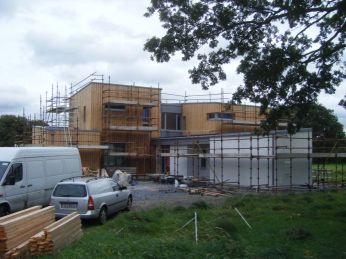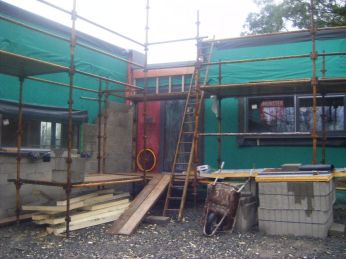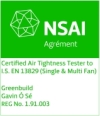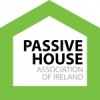26 November 2012: Best practise?
What constitutes 'Best Practise' for airtightness in Ireland?
Recently at a conference, someone mentioned that reports are still being issued with results such as 3 m3/hr.m2 being called 'Best practise'.
Indeed - we do it, but quite grudgingly. We do it, because there is no other published table of airtightness bands, that we know about, which can help to categorise airtightness levels. To now, we have used the following table:
| Best practise | Good practise | Acceptable practise | Poor airtightness | |
| q50 result @ 50 Pa | 3 m3/hr.m2 or less | 3 m3/hr.m2 to 7 m3/hr.m2 | 7 m3/hr.m2 to 10 m3/hr.m2 | Over 10 m3/hr.m2 |
These values have been partly garnered from UK publications, e.g. ATTMA (the 2006 document originally used for this document may no longer be available - see here, BSRIA (may be downloaded here ) and the TM23 document from CIBSE (can be purchased via this link)
 |
 |
 |
| Attma 2006 Table | Attma 2010 Table | TM23 table |
However, our latest Part L revision of the Building Regulations (2011) calls for results of 7 m3/hr.m2 or less. Therefore for new dwellings at least, 7 to 10 3/hr.m2 is no longer 'Acceptable'.
Also, we see increasing numbers of buildings going for the Passive House standard, and many Builders can achieve 3 or less on their first go at airtightness on a new build, with just a little guidance and good attention to detail.
Maybe our first table above can still be used for older buildings. But how should we revise the table for new builds? I am open to suggestions, it would be good if the industry could come up with new figures that make sense.
Heres a suggested revised table to get the discussion going!
| New Buildings (2012) | Best practise | Good practise | Acceptable practise | Poor airtightness |
| q50 result @ 50 Pa | 1.5 m3/hr.m2 or less | 1.5 m3/hr.m2 to 4 m3/hr.m2 | 4 m3/hr.m2 to 7 m3/hr.m2 | Over 7 m3/hr.m2 |
| Older buildings, & Renovations | ||||
| q50 result @ 50 Pa | 3 m3/hr.m2 or less | 3 m3/hr.m2 to 7 m3/hr.m2 | 7 m3/hr.m2 to 10 m3/hr.m2 | Over 10 m3/hr.m2 |
Note from September 2012
In the interests of interest sake, we are starting an occaisional and intermittent blog in this location, to do with items of interest or relevance to our field - heat loss, airtightness, passive houses, BERs or perhaps interesting items we come across at jobs.
Certainly, that is the thought at the moment. Sometimes, it may be a little bit more random than that.
25-Sept-2012: Three in a row
Excellent results recently - 3 successful preliminary Passive house tests within 10 days. For each of them this was the first official test of the house, at the preliminary envelope closing stage, and each of them met the mark on day of the test. A sure sign that there is increasing excellence in the market. Indeed, the Shoalwater house was less than 0.30 ACH using the Passive House volume methodology - the lowest result we have had to date!
Well done to Shoalwater Timber Frame, Wolohans and Ramstown Timber Frame Homes.
 |
 |
 |
| The architect on the Shoalwater and Wolohan houses (above left and centre) is Helena Fitzgerald - well done Helena! | The day was wet and miserable when testing the Ramstown house - but inside the site was spic and span - as you would expect for a good result on a passive house blower door test | |
It is our experience that to reach the Passive House standard at the end of the project, the airtightness has to be gotten right at this stage of the build. If these had been blockwork houses with a wet plaster finish as the airtightness layer they would be tested a little later in the process, but still not just at the end.


